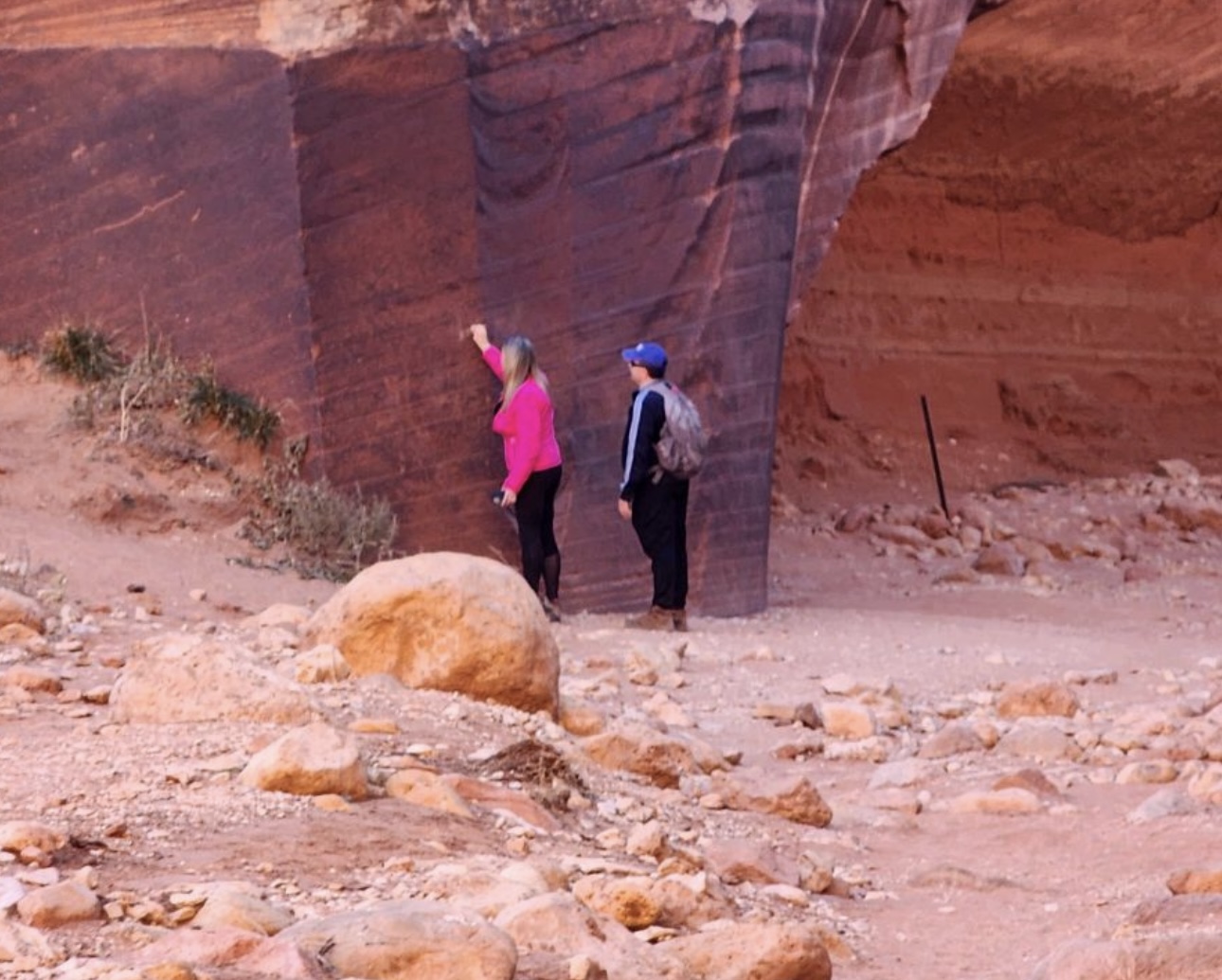Some information may be outdated.
On Oct. 9, H. Walck began as the Bureau of Land Management’s first-ever Canyon Country artist in residence. Walck will spend three weeks traveling to various sites on BLM land to gather inspiration and interact with visitors, and will then have four months to create a collection of work.
Under the new program, the Moab and Monticello field offices will switch off hosting the residency each year. The Moab field office is hosting the first artist.
“I care a lot about Moab and the ecosystem and environmental impact here,” Walck said. Walck moved out West from New York in 2019. They’ve been drawing their whole life and became a full-time artist when they settled in Moab in 2020.
Walck, who creates art under the name “PineBones,” has a style that is nearly haunting, using chunky shapes and delicate lines to depict desert iconographies like coyotes, snakes, ravens, and bones; sometimes words accompany the creatures, depicting messages such as “cultivate tenderness”; “be here now in this”; and “be who you need.” In June, when the Supreme Court overturned Roe v. Wade, the case that established the right to abortion, Walck created a sticker in response: a snarling coyote depicted above the words, “this body is mine, and you will not take it from me.”

Their art is created digitally and printed on stickers, postcards, prints, pins, and clothing. During the residency, Walck hopes to experiment with creating risograph prints (a type of print that acts like a digital screen print that uses bright, soy-based inks and produces small imperfections), though they said they’re going into the residency with no expectations.
“I told myself I wouldn’t fully plan out any kind of work until I get out there,” they said. But Walck does have a theme to stick to: they want to create art about the role water in the desert ecosystem and its threats—they want to start conversations, especially with the area’s visitors who “don’t often think about how their actions have very real consequences,” Walck said.
As part of the residency, there are two opportunities for visitors to meet and interact with Walck as they work on public lands: the first was on Saturday, Oct. 15 from 11:30 a.m. to 4 p.m. in Grandstaff Canyon at Morning Glory Arch; the second is on Saturday, Oct. 22 from 11:30 a.m. to 4 p.m. at the Hunter Canyon Trailhead.
“That’ll put me in the discomfort zone, because I don’t like talking to people when I’m hiking or working at all,” Walck said. “But I’ll be like an artist trail steward—I’ll hang out, I’ll talk to people, I’ll answer questions, and I’ll be drawing.”
Another challenge Walck anticipates is having enough time to visit all the places they want to go—the Canyon Country district of the BLM encompasses over 3 million acres of public lands. Walck lives in a van, so they’re familiar with the backcountry—they said they want to focus on the more remote sites the Canyon Country district takes care of, rather than focusing on popular ones.
“Through this program, we hope to inspire and educate the public about the unique resources within the Canyon Country district,” said Shannon Calabro, the artist-in-residence coordinator, in a press release. “We are excited to work with Walck and believe the work during this residency will help promote stewardship and provide a new perspective of public lands.”
Walck’s final works will be presented publicly after the residency is over; details of the presentation will be posted on the BLM Canyon Country District Facebook page once finalized.
Appreciate the coverage? Help keep local news alive.
Chip in to support the Moab Sun News.





